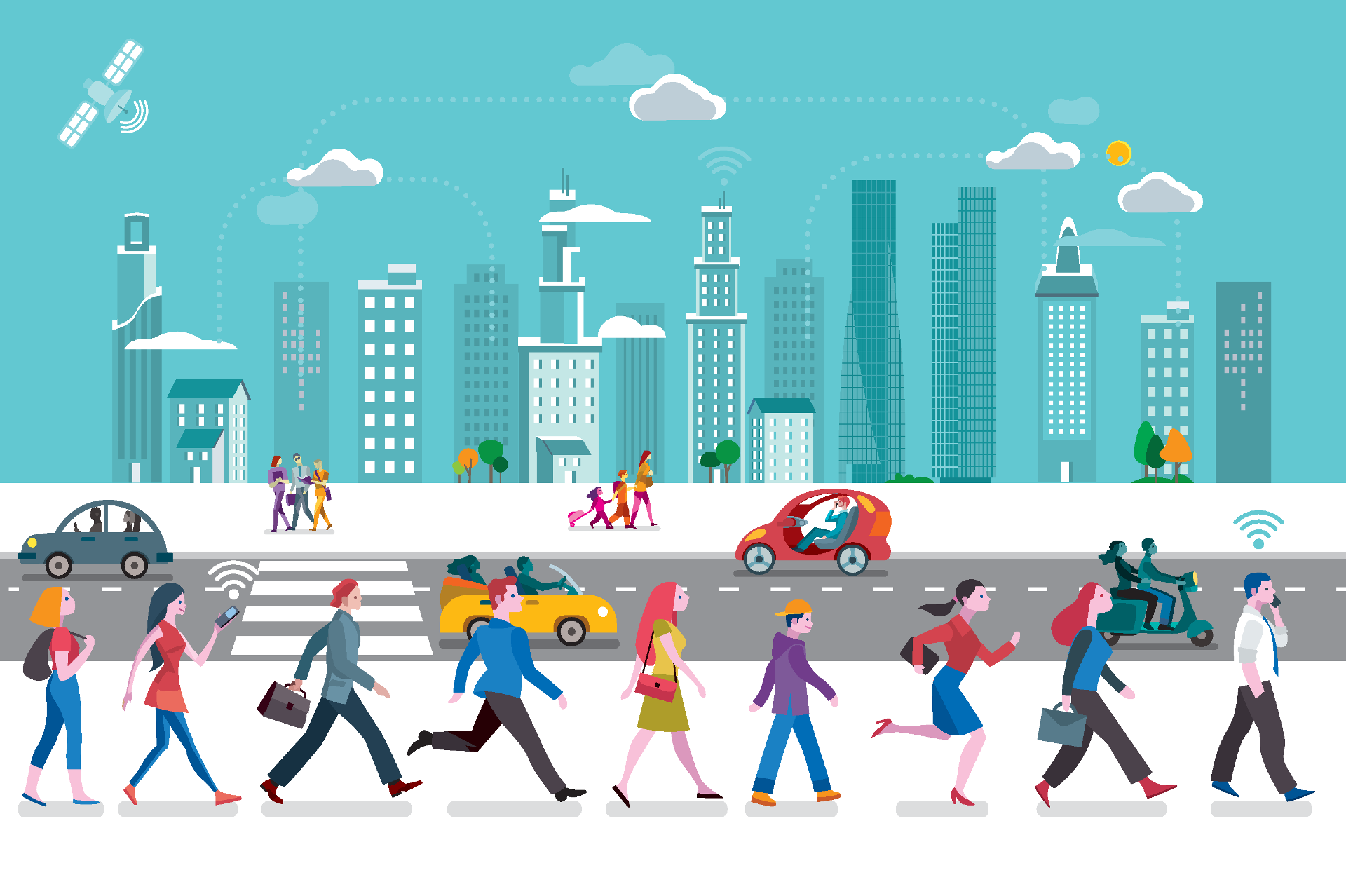by Mahashreveta Choudhary, Author at GeospatialWorld
According to a research report, the numerous vehicles taking people to their destinations have a huge potential of data generation that can boost the economic growth of smart cities by more than 3% and lead to additional benefits worth $20 trillion by 2026. By Mahashreveta Choudhary
As we move towards the age of digitalization, data is being rightly called the ‘king’, as it is essential for taking better and informed decisions. With smart cities becoming the buzzword, the significance of data has only grown as it enables decision-makers to plan, build and maintain cities in a better way. Cities around the world are looking to function efficiently through connected networks to increase transparency, by allowing open access to data.
In such a scenario, mobility is an area which produces enormous data every second. As per a research report by ABI, the numerous vehicles commuting and taking people to their destinations have huge potential of data generation that can boost the economic growth of smart cities by more than 3% and lead to additional benefits worth $20 trillion by 2026.
What is Mobility data and how it is generated
With rapid increase in urbanization, mobility has become one of the key drivers of economies around the world. It is about moving people and goods within or outside a city. Mobility increases the efficiency and quality of a country’s mobility system, helps support a stronger economy and a higher standard of living for its citizens. In the process of moving people and goods, modes of transportation gather data. This data includes a wide range of information related to transport. For example, data of public transit agencies, private mobility solution providers and individual citizens information about transportation assets and trips. Mobility data can also include data that affects or goes in tandem with mobility, such as weather data (can affect traffic, etc.), pollution and air quality data, and traffic violations data.
Mobility data is generated from public transit agencies, private mobility solution providers and citizens. It is either derived in a primary manner through an organization’s own sensors, or through user applications. While collecting data from primary sources, it is often assumed that data is valuable and collecting more of it can provide benefits in the future. The other method is the secondary method, in which data is collected by acquiring existing datasets from other parties, with intent defined well in advance. In this case, only that data is acquired which is of use.
Importance of mobility data
Mobility data is of great importance as it unlocks the maximum value that can help cities become smarter and provide better transport facilities to its citizens. For instance, it can inform citizens about real-time information of arrival and departure of trains and buses, help them to choose options for last mile connectivity and help in reducing travel time by informing them about areas with heavy traffic and suggesting alternative routes. It also helps in reducing traffic congestion due to cars looking for parking space as it can provide parking availability information. Mobility data also creates efficiencies for delivery vehicles by identifying the best time slots and routes, and adjusting traffic/ parking rules during major events. Furthermore, this data can also be used for identifying road safety and security hotspots, thus enabling quick response and understanding the issues of those areas and how they can be rectified.
This data can also help city administrators to better design and maintain routes, public transit and mobility infrastructure. For example, analyzing traffic and commute patterns can help planners to decide where to build infrastructure and add transit routes to ease stress in heavy traffic areas. Through the flow of traffic, the structural health of transportation infrastructures such as bridges and overpasses can be monitored.
Mobility data also helps in effective enforcement of regulations, develop new and modify existing regulations to ensure smooth functioning of system. This data can allow regulators to see where violations occur frequently and collect tolls and parking fees efficiently.
Challenges in optimizing mobility data
There are numerous problems that block proper utilization of mobility data. The first one is the lack of data sharing: companies still work in silos and the reasons for this are competition and privacy concerns. Thus, there needs to be a common platform where all data is available so that anyone can use it for better city management and decision-making. On the other hand, data standardization is another challenge that obstructs data sharing. Cities are still struggling to establish a standard for data sharing for efficient management. Therefore, a proper data sharing mechanism is a must for using this data efficiently.
About the Author…
 Correspondent, Geospatial Media & Communications. A poet at heart, Mahashreveta is what it takes to be a new-age digital journalist. Be it tech-heavy conference coverage, quick blogs, or elaborate magazine stories, she always put her best foot forward. An M.Phil in Media Studies, Mahashreveta has wide experience in video production, and in her earlier stints, she has worked on notable documentaries on art and culture. In her free time, she loves to try her hands at photography.
Correspondent, Geospatial Media & Communications. A poet at heart, Mahashreveta is what it takes to be a new-age digital journalist. Be it tech-heavy conference coverage, quick blogs, or elaborate magazine stories, she always put her best foot forward. An M.Phil in Media Studies, Mahashreveta has wide experience in video production, and in her earlier stints, she has worked on notable documentaries on art and culture. In her free time, she loves to try her hands at photography.
Mahashreveta@geospatialmedia.net









